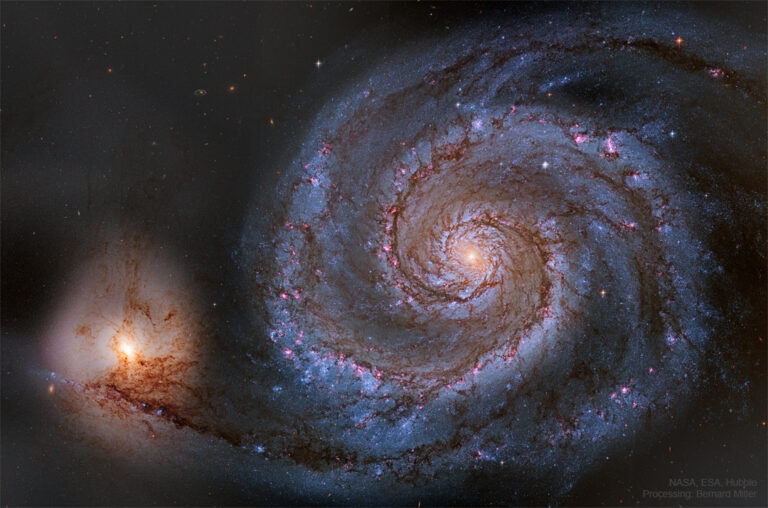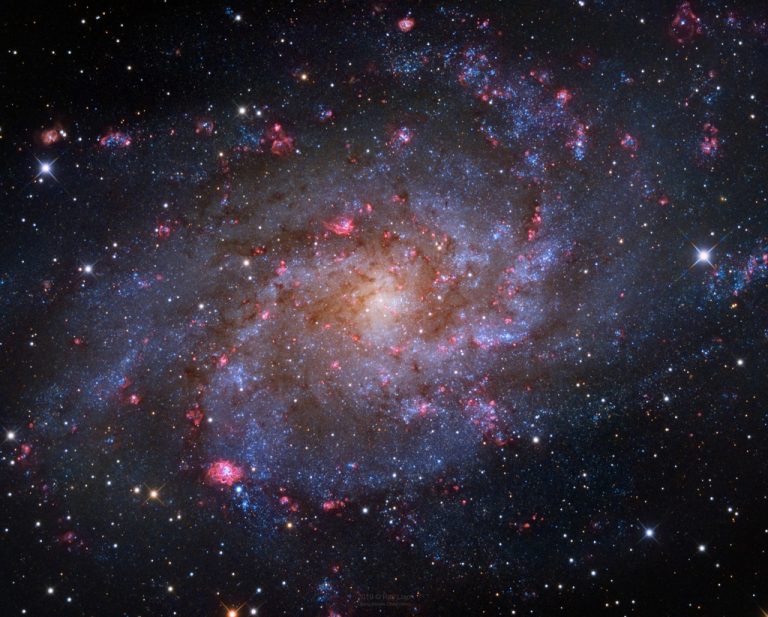M51:哈勃的涡状星系影像
2022年6月13日 M51: The Whirlpool Galaxy from Hubble Image Credit: NASA, ESA, Hubble, HLA; Processing & Copyright: Bernard Miller Explanation: The Whirlpool Galaxy is a classic spiral galaxy. At only 30 million light years distant and fully 60 thousand light years across, M51, also known as NGC 5194, is one of the brightest and most picturesque galaxies on the sky. The featured image is a digital combination of images taken in different colors by the Earth-orbiting Hubble Space Telescope, highlighting many sharp features. Anyone with a good pair of binoculars, however, can see this Whirlpool toward the constellation of the Hunting Dogs (Canes Venatici). M51 is a spiral galaxy of type Sc and is the dominant member of a whole group of galaxies. Astronomers speculate that…





